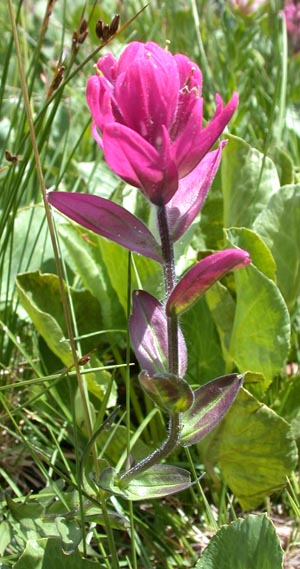Indian Paintbrush

Common Name(s):
Indian paintbrush
Scientific Name:
Castilleja sp. Mutis ex L.f.
Scientific Name Synonyms:
None known
Symbol:
CASTI2
Description:
Life Span: Perennial
Origin: Native
Season: Cool
Growth Characteristics: A 9 to 18 inches tall forb. Reproduces by seed and tillering.
Flowers/Inflorescence: Flowers are inconspicuous, surrounded by leafy, colorful bracts. The showy effect of this plant is produced by these bracts, which occur in a variety of colors (pale yellow to deep purple).
Fruits/Seeds: Fruit is a capsule.
Leaves: Linear or lance-shaped, alternating along the erect stem. Margins entire or lobed.
Ecological Adaptions:
Indian paintbrush is widespread throughout Utah, occurring from the desert floors to the subalpine meadows. Some species are known to be partial root-parasites, especially with sagebrush.
Soils: Can occur in a variety of soils, but most abundant in loams.
Associated Species: Sagebrush, aspen, bromes, lupine.
Uses and Management:
Indian paintbrush's main importance is its aesthetic value. Palatability of Indian paintbrush has been rated as fair to good for sheep, poor to fair for cattle, and poor for horses.

